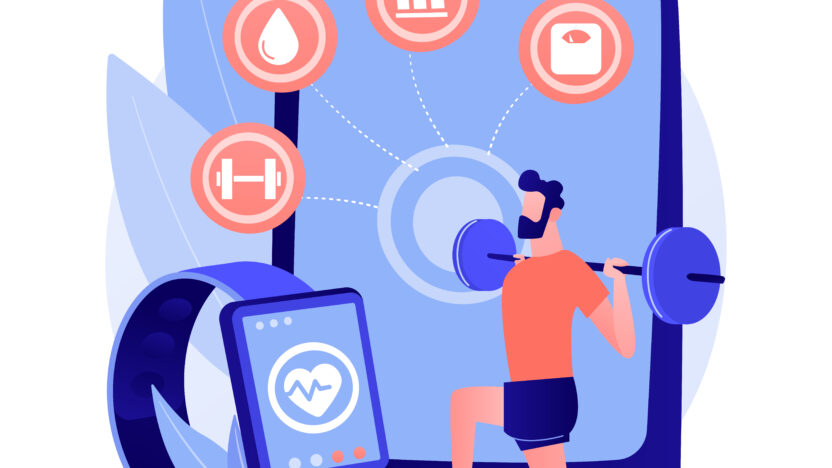Modern fitness is being reshaped by smart technology that brings flexibility, real-time insights, and personalized experiences. What was once limited to physical gyms and in-person training has now evolved into a connected ecosystem that prioritizes convenience, customization, and accessibility. At the heart of this transformation is on-demand app technology, supported by on-demand fitness app development services, empowering fitness businesses to expand their reach, deliver innovative services, and build deeper engagement with users. Whether you operate a gym, yoga studio, or personal training service, adopting an on-demand app can open new revenue streams, strengthen client relationships, and drive sustainable growth.
Why Fitness Businesses Need On-Demand Apps
Consumer expectations are rapidly changing. People seek flexibility, instant access to services, and personalized experiences. Traditional fitness models often fall short in delivering on these expectations. An on-demand app bridges this gap by offering users the ability to access fitness content and services when, where, and how they want.
Clients no longer need to adhere to strict class schedules or travel to specific places. They can start a workout, connect with a trainer, or follow their progress while on the go due to their mobile devices. This level of autonomy promotes higher engagement and user happiness.
Expanding Reach Beyond Physical Boundaries
An on-demand software enables your company to reach clients well beyond its local market. Trainers can now contact users all across the world, rather than just in a physical gym. Whether someone lives in a rural region without access to professional fitness facilities or prefers the solitude of home workouts, your app can connect them to expert guidance.
Offering online lessons, live sessions, and pre-recorded fitness videos can significantly increase your target audience. Adding features such as bilingual support, geo-targeted content, and cultural inclusivity can improve accessibility and consumer happiness.
Personalized Fitness Journeys Through Data
Users today want more than a one-size-fits-all training regimen. They want a program that adapts to their objectives, preferences, and progress. This is made feasible by an on-demand fitness app’s data collecting and individualized algorithmic feedback.
You can include tools that allow users to enter their fitness objectives, exercise history, health status, and daily routines. Based on this information, your app can provide personalized workouts, diet plans, and daily activity goals. This level of customisation fosters trust and enhances user loyalty over time.
- Track user metrics like weight, BMI, calories burned, and daily steps.
- Use AI algorithms to adapt fitness plans based on user performance.
- Provide milestone badges and goal reminders to encourage consistency.
Integration of Wearables and Smart Devices
Fitness apps that integrate with smartwatches, fitness bands, and health monitoring devices add value. Wearable integration offers real-time health monitoring, providing users and trainers with rapid feedback on performance and health status.
Wearable data, such as heart rate, sleep quality, hydration levels, and stress indicators, allows for more personalized fitness experiences. Users can see instant effects from their activities and remain motivated as their metrics improve over time.
- Sync data from Apple Health, Google Fit, Fitbit, and other platforms.
- Display real-time metrics during live workout sessions.
- Enable alerts for irregular vitals or lack of activity.
Real-Time Coaching and Virtual Training
Live sessions and virtual coaching enable customers to receive real-time feedback from trainers without being physically there, resulting in a more involved and engaging fitness experience while preserving flexibility.
Your on-demand app can host live group classes, one-on-one coaching, and Q&A sessions. Trainers can monitor form, correct technique, and offer encouragement, just as they would in person. Users can also record sessions for later review.
- Use video streaming and low-latency tech for smoother sessions.
- Allow users to book time slots with trainers directly in the app.
- Enable interactive chat and screen sharing for improved instruction.
Subscription and Revenue Models
One of the most significant advantages of an on-demand fitness app is the possibility of recurring revenue. Instead of relying entirely on memberships or class attendance, you can generate revenue through subscription levels, in-app purchases, and premium features.
Offer free trials to attract users, followed by flexible subscription options like monthly, quarterly, or annual plans. You can also upsell personal coaching sessions, customized diet plans, or branded merchandise through the app.
- Introduce freemium access with locked premium features.
- Enable auto-renewal for convenience and retention.
- Include payment gateway integrations like Stripe or Razorpay.
Community Engagement and Motivation
Community plays a significant role in fitness success. On-demand apps that incorporate social elements encourage users to stay committed, inspired, and connected.
To create a sense of belonging, include social feeds, leaderboards, group challenges, and workout sharing opportunities. These aspects contribute to healthy rivalry and support systems among users, which can greatly enhance retention and word-of-mouth promotion.
- Let users follow friends and trainers.
- Host weekly fitness challenges and reward winners.
- Enable comments, likes, and activity sharing within the app.
High-Quality UI/UX Design for User Retention
No matter how powerful the features are, users won’t stay on a platform that is hard to use or poorly designed. A clean, intuitive UI/UX is essential for keeping users engaged and motivated.
Use consistent color schemes, clear navigation, and responsive design to make your app easy to use on all screen sizes. Collaborate with a professional UI/UX design solution provider who understands the specific needs of a fitness audience.
- Streamline onboarding with easy account creation and walkthroughs.
- Use animations to guide users through workouts or routines.
- Offer dark mode and voice control for accessibility.
Gamification of Fitness Goals
Adding gamified elements like badges, progress bars, and reward systems can turn mundane workouts into engaging missions. Users are more likely to complete activities when they receive real-time feedback and rewards.
Gamification not only boosts daily app engagement but also encourages users to push through plateaus. By making progress fun and visible, you keep users motivated without needing constant trainer input.
- Award digital trophies for milestones like 10K steps or 7-day streaks.
- Provide surprise rewards to retain user interest.
- Allow users to set fitness challenges for friends.
Offline Access and Downloadable Content
Not all users will have reliable internet access during workouts, especially those training outdoors. Allowing users to download workouts and view them offline greatly enhances convenience and usability.
With offline access, your app becomes a reliable tool for fitness on the go. Whether they’re traveling, hiking, or simply avoiding mobile data use, users can rely on your app for uninterrupted sessions.
- Offer downloadable video libraries and audio guidance.
- Include offline access for nutrition plans and fitness logs.
- Sync offline activity once internet access is restored.
Scalability and Future-Proofing
Fitness businesses must think long-term. Your app should be built on a scalable architecture that allows for future updates, new features, and user growth without compromising performance.
Invest in a tech stack that supports real-time data sync, high concurrent users, and integration with third-party APIs. Choose development partners who understand both fitness industry needs and emerging tech trends.
- Use cloud-based infrastructure for storage and processing.
- Modular architecture allows new features without disruption.
- Update regularly based on user feedback and analytics.
Enhanced Data Analytics and Reporting
Understanding how users interact with your app can inform better business decisions. Use integrated analytics to track metrics such as active users, workout completion rates, and subscription conversions.
These insights help identify what works, what doesn’t, and how to improve user experiences. You can also segment your user base to offer personalized content and promotions that match their behavior.
- Use heatmaps to analyze feature engagement.
- Generate user reports for trainers to evaluate client progress.
- Monitor churn rate and usage frequency to refine marketing.
Compliance and Data Security
Handling personal health data requires strict compliance with global privacy regulations like GDPR, HIPAA, and others. Your app must prioritize security by encrypting user data, using secure authentication, and implementing role-based access controls.
Users should feel confident that their private information is protected. Make privacy policies transparent and easy to understand.
- Apply end-to-end encryption for sensitive data.
- Use 2FA or biometric login options.
- Display privacy settings in user profiles for customization.
Conclusion
On-demand app technology has transformed what fitness firms can provide. From individualized training and smart coaching to global reach and recurring revenue structures, the advantages are numerous and quantifiable. Partnering with a trusted on-demand app development company ensures intelligent execution, high-quality design, and scalable technology, enabling your fitness business to evolve into a dynamic, user-centric platform that delivers value around the clock. As the sector expands, now is the moment to invest in a robust on-demand fitness app that will revolutionize how your services are provided, consumed, and celebrated.



